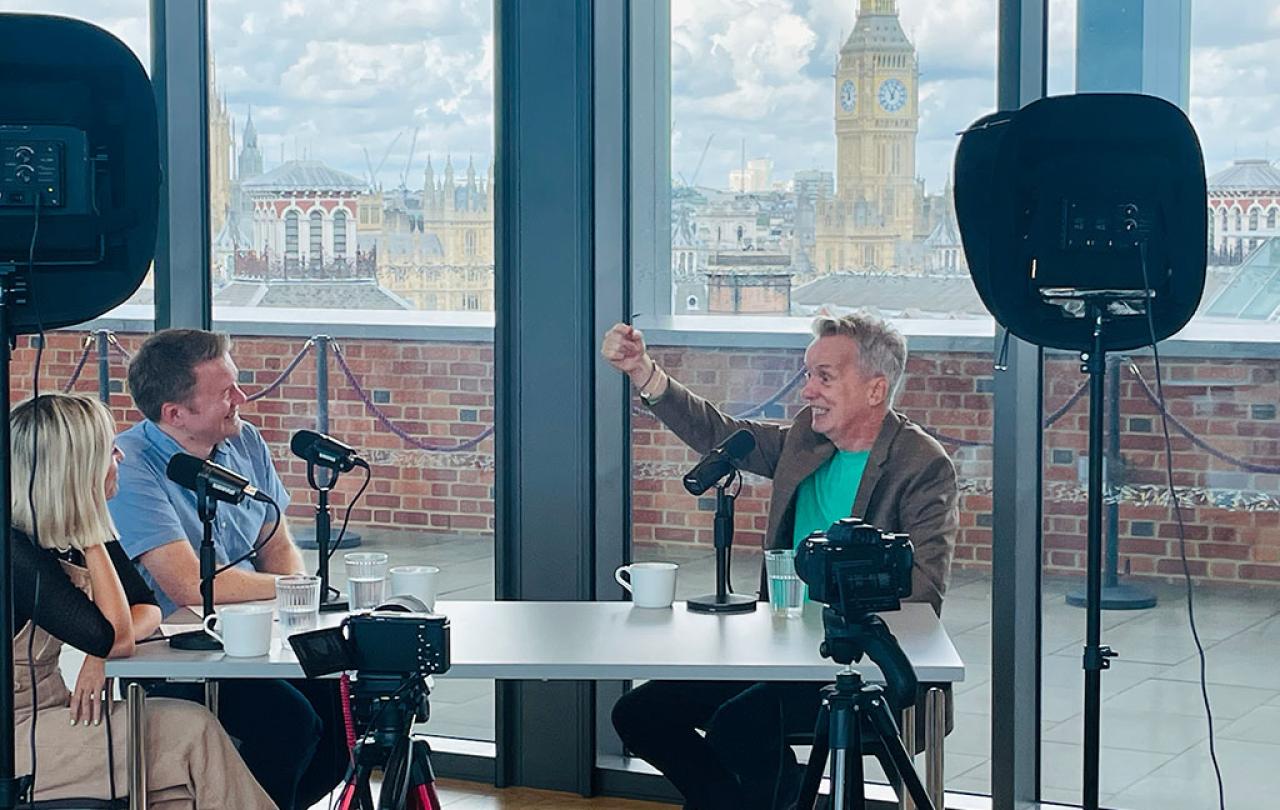Ten years ago, I was researching real life baddies for my sitcom Bluestone 42 about a bomb disposal team set in Afghanistan. At times, I had to think like the Taliban who, in their own minds, were entirely justified in leaving bombs by the side of the road, to be triggered by British soldiers or Afghan children. They were pretty relaxed about the outcome. It’s hard to sympathise with this way of thinking, but it made sense to them.
My internet search history from that time probably put me on some sort of Home Office watchlist. Maybe a small dossier was started on me. More recently, that dossier would have become thicker as I’ve moved sideways from sitcom into murder mysteries, having recently worked on Death in Paradise and Shakespeare and Hathaway. To work on shows like these, you need to be thinking of good reasons for good people to commit murder. Someone would need a very strong motive to commit a murder on an idyllic Caribbean island where the local detective has a 100 per cent resolution rate. You also need to research ingenuous methods for murdering people in a way that escapes detection. I’m surprised I’ve not yet had a knock on my door, or enquiries made to the neighbours to call a number if they see anything suspicious.
But what about cartoon villains where nothing is real? The bold colours and the larger-than-life characters might suggest that there is more clarity about goodies and baddies. But there isn’t. Evil villains – that is, villains who realise they are evil – are extremely rare. Skeletor from He-Man and the Masters of the Universe comes to mind. This kind of demonic baddie can be entertaining with wit and charm, like Hades in the Disney movie, Hercules. This character had some brilliant one-liners and was superbly brought to life by the voice of James Woods. Overall, however, purely evil characters are hard to write.
Cartoon villains need proper motivation. This is either a character flaw or a backstory. In The Lion King, Scar is consumed with envy that his brother is king – and a good one at that. In The Incredibles, Syndrome is playing out his sense of injustice that he was not allowed to be Mr Incredible’s sidekick, Incrediboy. In The Simpsons, Mr Burns is essentially Mr Potter from It’s a Wonderful Life. He’s a Scrooge-type figure who doesn’t care about love and respect. He just wants to own the town.
The cartoon villain I’ve been thinking about is for a new animation project I’ve been working on called Jazz Cow. The eponymous hero is a saxophone-playing cow and a reluctant Bogart-style leader of a bohemian band of misfits. They are trying resist the advance of the all-consuming algorithm created by Dr Popp, the villain. But what’s his motivation?
Dr Popp is the very worst kind of villain: he has great power and he wants to help. In his own mind, he’s completely clear about his mission. He’s trying to make the world better, easier, safer, cheaper, more efficient and convenient. Why would anyone want to refuse his technology, reject his software and keep away from his algorithm?
This is why Dr Popp has to silence Jazz Cow, literally, by stealing his saxophone. He simply cannot allow Jazz Cow to delight audiences at Connie Snott’s with live improvised music. There’s no need for this music! Dr Popp has all the music you could possibly need, want or imagine. Why improvise when we have artificial intelligence?
Dr Popp is a cartoon villain for today when relativism is still alive and well. ‘Good’ and ‘Evil’ are still concepts or points of view rather than absolutes. However, there is good and evil in Jazz Cow. But the evil doesn’t come from Doctor Popp. It comes from the user or consumer. That would be us.
‘The Algorithm’ is always learning and always trying to give us our hearts’ desire. And that’s the problem: our hearts frequently desire that which they cannot – and should not – have. Dr Popp’s algorithm is like a mirror held up to our faces. In it, we see the real baddie: ourselves. Not even Jazz Cow can save us from that. But what this horn-playing cow can do is to make the world a more humane place.
For more information about Jazz Cow, and information on how you can make the show happen, take a look at our Kickstarter – and don’t worry. Jazz Cow would approve, as it’s the creative’s way of sticking IT to the man.


